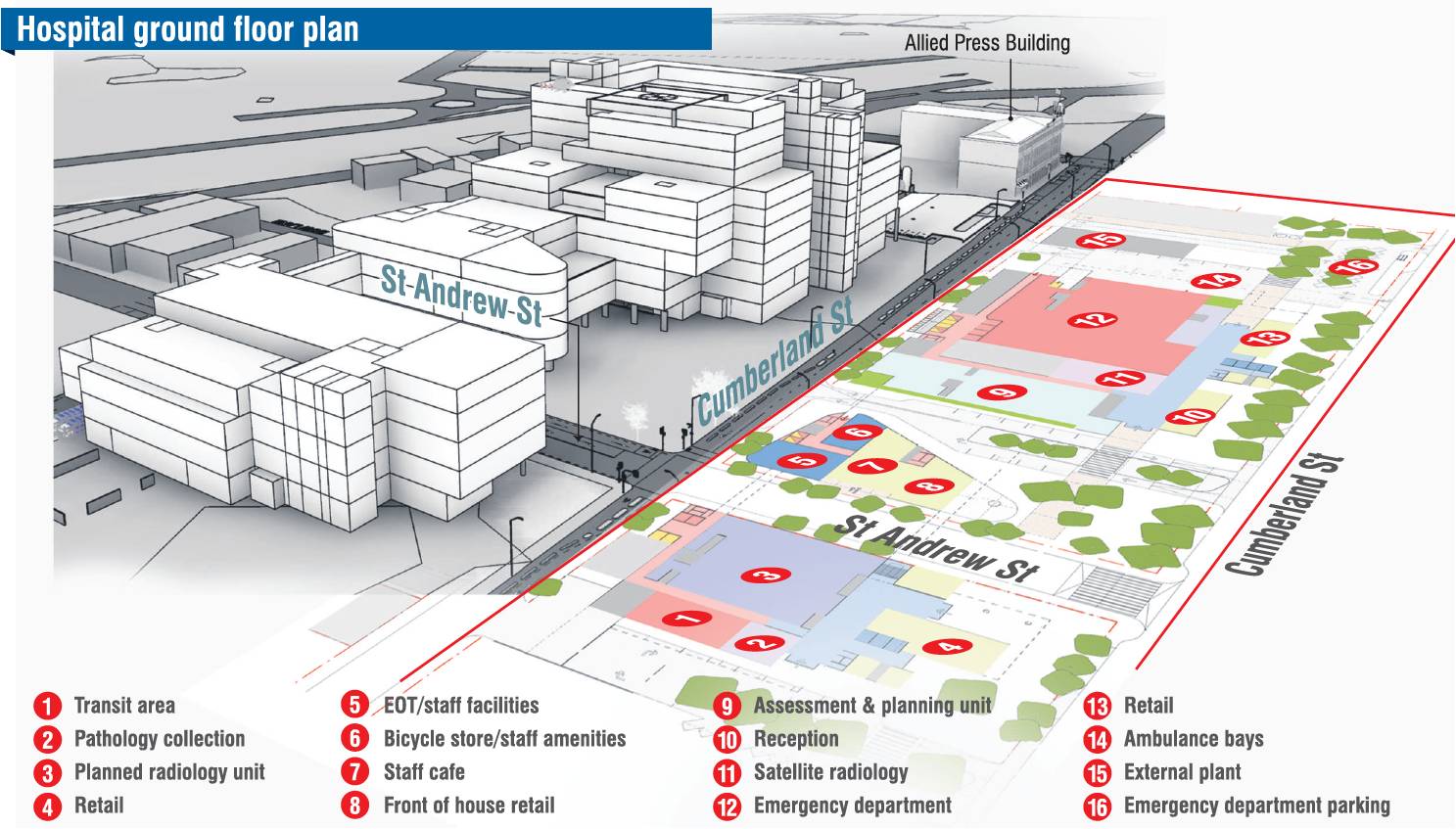
The new Dunedin Hospital remains a two-building project despite both the Ministry of Health and the Southern District Health Board pushing for a single building, the Otago Daily Times can reveal.

A single building would have "maximised clinical efficiencies and functionality," the ministry said, but Dr Clark told the ODT that proposal was rejected due to cost, timing and shading issues.
"The two-building model, in my view, provides for the most efficient and timely delivery of the new hospital," Dr Clark said.
"A building that shades New Zealand’s most photographed building (Dunedin Railway Station) was unlikely to have a smooth passage through the consenting process, and equally, maintaining a site close to the learning precinct was important too, to ensure those connections to the polytechnic and university remained."
The ODT has previously reported that hospital planners had considered reducing the hospital to a single building.
However, it was not known things had reached the point where ministers received recommendations that the two-building plan unveiled in May 2018 should not proceed.

It is understood the SDHB preferred a single building on the Wilsons site, with a single building on the Cadbury site its second option.
The ministry’s project steering group preferred a single building on the Cadbury site but the hospital build’s governance organisation, the Southern Partnership Group, backed the two-buildings model ultimately endorsed by the two Cabinet ministers.
"A one-site option had not been considered since the start of the project in any detail," Dr Clark said.
"The ministry laid out what they saw as the advantages of that but in my view the two-site one is much more likely to be delivered in a timely fashion.
"We know that the existing hospital buildings are challenging to maintain and to operate in — it is imperative that we deliver to the people of the South a facility that is fit for purpose, as soon as possible."
The $1.2billion-$1.4billion project is under severe budget pressure, but Dr Clark said switching to a single building would not necessarily have eased that.
"Ministers I have spoken with are keen that we get the best outcome here and the difference between the cost of a building which is likely to be consented more easily and delivered in a timely fashion and one which has likely challenges is not a significant amount in the overall budget."
Dr Clark is still awaiting the project’s much-delayed detailed business case, a document which requires Cabinet approval before it can proceed.
He was confident it could receive that nod in favour before the election if the report was lodged soon.
Hospital rebuild programme director Mike Barns said final costings for the project would not be confirmed until its detailed business case was finalised and approved.
"The most significant other site related cost which has emerged through concept design is the need to address the potential flooding risk," he said.
"Flood modelling has demonstrated that the ground floor will need to be raised substantially to ensure the hospital remains operational in the event of a major flood."
Poorer than expected ground conditions, higher than original estimated land acquisition and compensation costs land decontamination and dewatering costs had also also affected earlier cost estimates, Mr Barns said.
"As with all large projects in the early stages, cost elements in the budget are constantly reviewed and updated.
"Our design team recommended the option of one building on one site which maximised clinical efficiencies and functionality.
"However, it also acknowledged, a two-building option on two blocks enabled significant scope for future expansion and provided good delineation between inpatients and outpatient services."
Mr Barns said the project team was developing designs for an 89,000sq m complex.
"It is smaller than the 93,000sq m in the indicative business case, but it is more functional with duplicated spaces reduced and more efficient integration of services."
Mr Barns said indicative timelines for the project "are still largely capable of being met," and any potential delays would be in months, not years.
Comments
There we go, one compromise after another (lousy ground conditions, astronomical costs, wrecked one-ways, endless delays etc.), all in the name of The Central City Location, which wasn't even that critical.
Mr Clark we thought you had best interests of Dunedin doctors at heart, very disappointed.
Well if you swapped positions of the two buildings, there would be a lot less shading on the railway station ... tallest building to the north of St Andrew Str, shortest to the south.
Nah ... too simple and it would take another 5 years and $50m to find reasons that wouldn't be practicable !
Anyone thought of moving the railway station further south !? ;-)
So, once more let down by our Labour politicians and an inept Health Minister. Good to know how they value a safe seat!
This is shaping up as another wonderful Labour party led bungle












